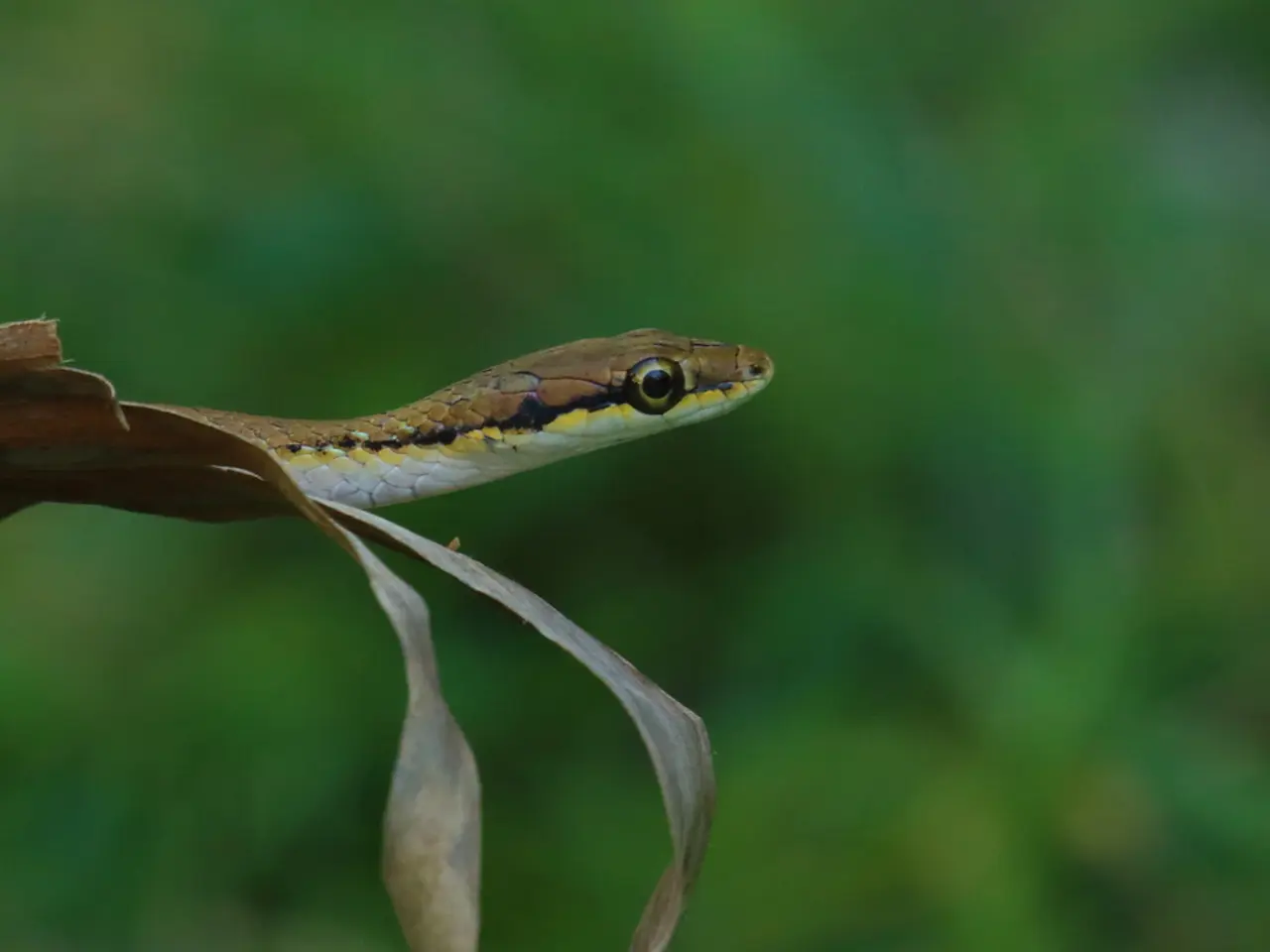Tending to a Snake Plant (Dracaena trifasciata): Essential Houseplant Guide
In the realm of houseplants, few are as popular and easy to care for as snake plants, members of the Dracaena genus. Once classified under Sansevieria, this genus encompasses a wide variety of species and cultivars, each with unique leaf forms and colours. Here's a closer look at some notable species and popular cultivars.
### Key Species and Cultivars of Dracaena (formerly Sansevieria)
The classic snake plant species, Dracaena trifasciata, boasts multiple cultivars that are popular for indoor growth. Known for their sword-shaped leaves with green and yellow variegation, these plants are a staple in many homes. One of the most recognisable cultivars is Laurentii, with tall leaves featuring green centers and bright yellow edges.
Another popular dwarf cultivar is Hahnii, or the Bird’s Nest Plant, which forms a compact rosette resembling a bird’s nest. Its short, broad leaves feature a classic striped pattern. The variegated form of Hahnii, Golden Hahnii, sports golden-yellow edging, making it a striking addition to any collection.
Moonshine is known for its pale silvery-green to gray foliage, while Whale Fin, or Shark Fin (Dracaena masoniana), features large, broad, and paddle-shaped leaves. The African Spear Plant (Dracaena angolensis) stands out with its cylindrical, rounded leaves, sometimes braided, and the Cylindrica species shares this trait with its tall, cylindrical leaves.
The Starfish cultivar features compact, fan-shaped cylindrical leaves, while Twisted Sister boasts spiral twisting leaf margins. The Black Gold cultivar offers contrasting leaf colours, and Zeylanica features marbled green leaf waves. The Banana cultivar resembles gently arched banana leaves.
### Noteworthy Species and Cultivar Highlights
With nearly 100 species under the Dracaena genus, the variety available to plant enthusiasts is vast. Some species, such as Dracaena angolensis and Dracaena cylindrica, have cylindrical leaves that contrast with the classic flat leaves most snake plants possess.
Hybrid cultivars from Thailand, like Chanin (spiral short leaves), Dancing Dragon (wavy foliage), and Iceman (silvery leaves with narrow green lines), add to the diversity for collectors. The well-known Whale Fin (Mason Congo) cultivar produces large, broad paddle-shaped leaves, often sold as single-leaf plants but capable of growing multiple leaves over time.
This diversity allows snake plant enthusiasts to select varieties based on leaf shape (flat, cylindrical, paddle), colour (green, yellow variegated, silver), and growth habit (rosette, upright spear) to suit different decorative and horticultural preferences.
Snake plants are easy to care for, forgiving beginners, yet appealing to confirmed houseplant collectors due to their complex variegation and interesting cultivars. They can be propagated by division or rooting cuttings, best undertaken in spring. Monthly cleaning of snake plants helps remove dust from their leaves, improving their ability to photosynthesize.
It is important to use a container with multiple drainage holes for snake plants to allow excess water to drain out, and they prefer bright, indirect sunlight or sunlight filtered through filmy curtains. They are hardy, drought-tolerant, and attractive, growing to 12 feet tall or taller outdoors but staying half as tall indoors.
Some people consider fertilising snake plants to be necessary, using a balanced fertiliser diluted to half strength once in spring and once in midsummer. The cultivar 'Futura Superba' has arresting coloration and rarely grows more than five leaves. Overwatering snake plants can potentially kill them.
Snake plants are native to Madagascar, southern Africa, and southern Asia and are reputed to filter the air, removing toxic pollutants and boosting mental health. They are drought-tolerant and store water in their long, flat leaves, making them ideal for those who may forget to water their plants regularly. However, it is not advisable to place them near heaters or air conditioning units due to fluctuating temperatures.
Home-and-garden enthusiasts can explore a wide variety of Snake plant cultivars, each offering unique lifestyle additions. From the classic Laurentii, known for its striking yellow edges, to the compact Golden Hahnii with its golden-yellow leaves, these plants bring color and texture to home interiors (lifestyle). Choosing from a multitude of species like Moonshine, Whale Fin, or African Spear Plant allows for tailoring these plants to complement distinct decorative and personal preferences (home-and-garden).




